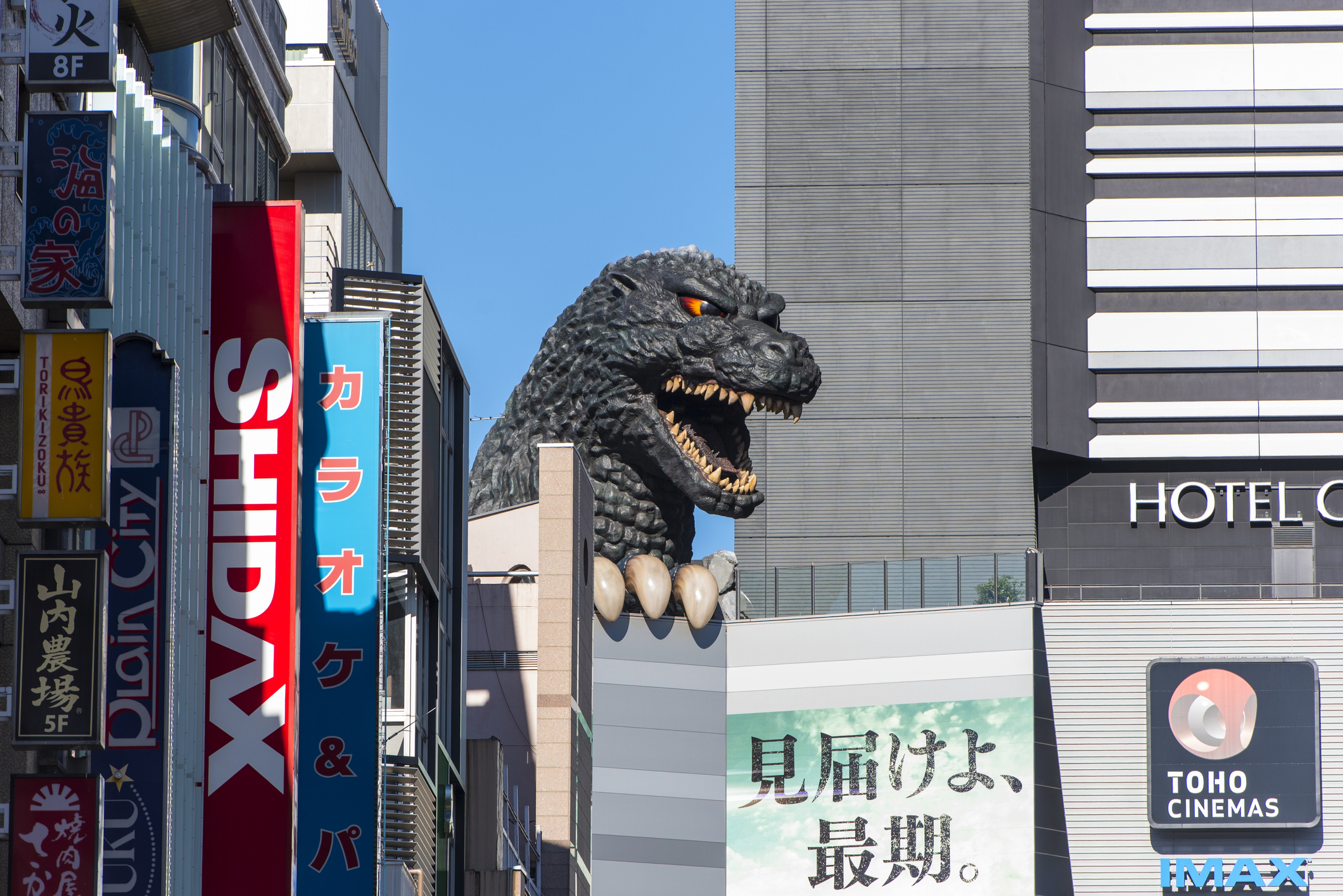 (iStock/AlxeyPnferov)
(iStock/AlxeyPnferov)This year marks the 70th birthday of one of the most iconic and terrorizing behemoths in film history, Godzilla. Perhaps best known in the U.S. for his continuous rivalry with the classic beast, King Kong, Godzilla serves not only as a monstrous pop icon, but as a complex symbol of Japan’s socio-political history.
“We don’t know how to interpret Godzilla,” says Yuki Miyamoto, a professor of religious studies and director of
DePaul Humanities Center. “That ambiguity cultivates calls for fascination, and we are drawn to the uncanny and unfathomable.”
Miyamoto researches Godzilla’s geo-political history and will speak on a panel Friday, Feb. 9 following a screening of the 1954 film “Godzilla” at the
Gene Siskel Film Center.
The leadup to an iconic monster movie
A series of political and historical events spawned “Godzilla” just a decade after the end of World War II, Miyamoto says. In his “
Atoms for Peace” speech in 1953, U.S. President Dwight D. Eisenhower proposed a global movement to develop nuclear technology not for the destruction, but benefit, of all humankind.
However, just a few months later, an undisclosed U.S. nuclear test on the Marshall Islands, a former Japanese territory granted to the U.S. after the war, caught a group of Japanese fishermen off guard, exposing them to radioactive material.
Still dealing with the fallout from the 1945 U.S. nuclear bombings of Nagasaki and Hiroshima near the end of WWII, the nuclear testing “caused the Japanese to think, ‘Even when we’re not at war, we could be affected by nuclear bombs’,” Miyamoto says. “This triggered people’s attention to nuclear bomb tests and radiation’s effects.”
The filmmakers of “Godzilla” were originally inspired by the American film, “The Beast from 20,000 Fathoms,” and then added the development of Godzilla as being a monster that’s been awakened by the effects of radiation, Miyamoto says.
Hidden meaning throughout the ‘Godzilla’ movie
When the film premiered in 1954, Miyamoto says about 10% of Japan’s population at the time went to see the movie, making it an immediate blockbuster hit. Some 30 movies later, Godzilla is still a supreme cinematic figure in Japanese culture, Miyamoto says.
 Yuki Miyamoto is a professor of religious studies and director of DePaul Humanities Center. (Photo courtesy of Yuki Miyamoto)
Yuki Miyamoto is a professor of religious studies and director of DePaul Humanities Center. (Photo courtesy of Yuki Miyamoto)Though Godzilla is a staple source of media revenue and an idol for fanbases, Miyamoto says beneath his thunderous roars and destructive essence are many themes. The first “Godzilla” film has a character who references the devastating Nagasaki bombing, indicating a socio-historical connection to the horrifying nature of radiation poisoning.
“There was a woman who was running away from Godzilla, and she said, ‘Oh, I don’t want to die here because I survived the Nagasaki bomb’,” Miyamoto says. “Interestingly, this part was edited out in the 1956 American version of Godzilla.”
Along with this tidbit, Miyamoto says many of the Godzilla films include themes surrounding suicide, as well as the relationship between scientific responsibility and nuclear curiosity.
The original film’s protagonist is a scientist named Dr. Serizawa, who develops a weapon called the Oxygen Destroyer meant to kill Godzilla. His aim is to save the rampaged city of Tokyo, while his boss, Dr. Yamane wants to keep Godzilla alive to further study its genetic relationship with radiation. The scientist eventually sacrifices himself at sea, using the weapon to defeat Godzilla while taking the blueprints of the Oxygen Destroyer with him to the grave and leaving other characters to worry about Godzilla re-awakening should nuclear testing continue.
For the Oxygen Destroyer, Miyamoto believes there are parallels to using catastrophic nuclear weapons against threats of harm, perhaps creating a self-contradictory cycle of damage where violence is used to solve violence.
“The scientist invented something terrible, because the Oxygen Destroyer can kill Godzilla, but also potentially destroy the world,” Miyamoto says. “He found a way to sort of ‘put the genie back in the bottle’ by killing himself along with Godzilla, leaving nothing behind about his invention of the Oxygen Destroyer.
“It raises the question: Was this his way of taking responsibility for having invented something horrible? The film gives rise to a question of how scientists take responsibility for the power of destruction that they have created,” Miyamoto adds.
In terms of Godzilla’s direct meaning, that remains more ambiguous. On a surface level, he may appear to be nothing more than a predator, but Miyamoto believes there are variations in who he is and what he represents. One interpretation is that Godzilla is the injured party rather than just the predator.
“Godzilla himself was awakened by nuclear tests, so he can be considered a victim of bombings,” says Miyamoto. “The scales themselves look like radiation burns that victims suffered from.”
Miyamoto’s favorite Godzilla films are the original as well as the most recent Japanese film, 2023’s “Godzilla Minus One.” “I like the first one because it directly addresses scientists’ responsibilities,” Miyamoto says. “I also like the last one. It’s kind of a tearjerker. While containing some melodramatic elements, it presents a counter-narrative challenging the original storyline, which appears to uphold the value of self-sacrificial death.”
Emily Diaz is a student assistant for internal communications in University Communications.